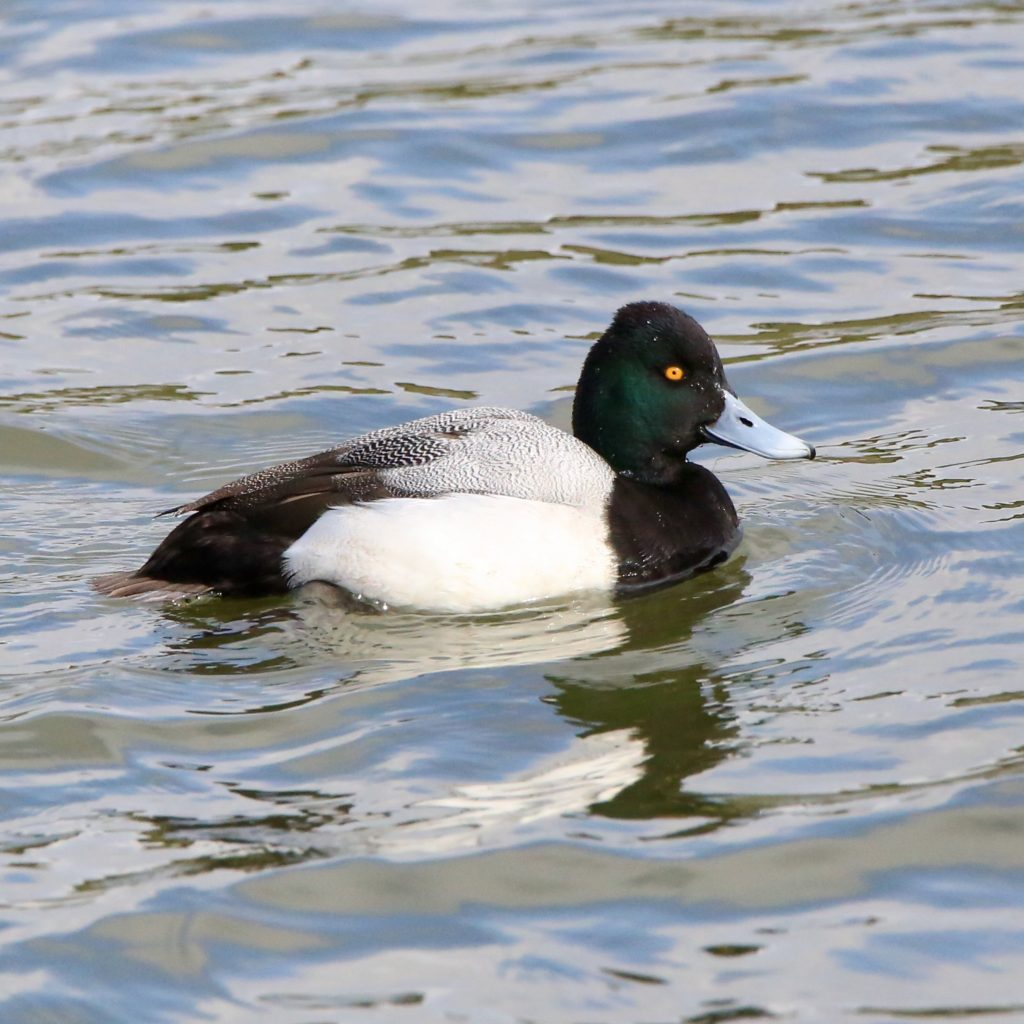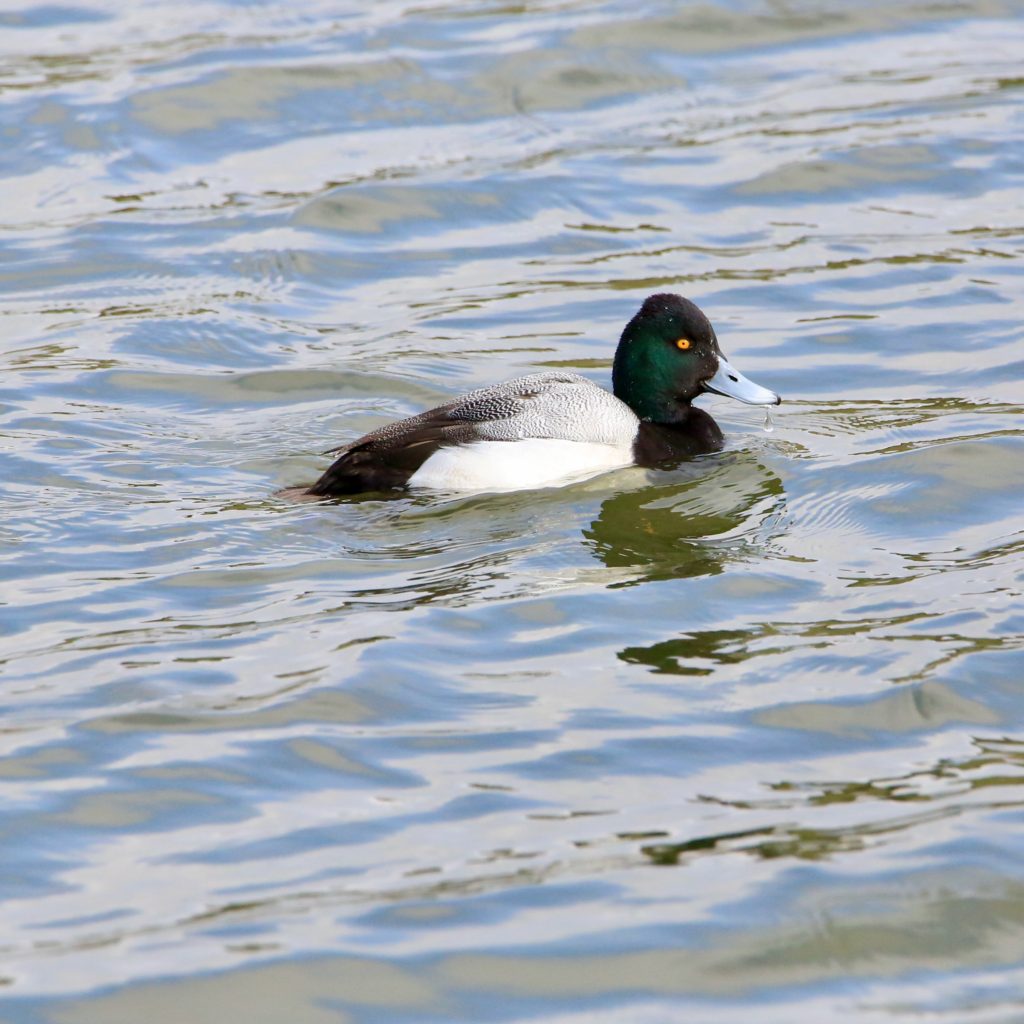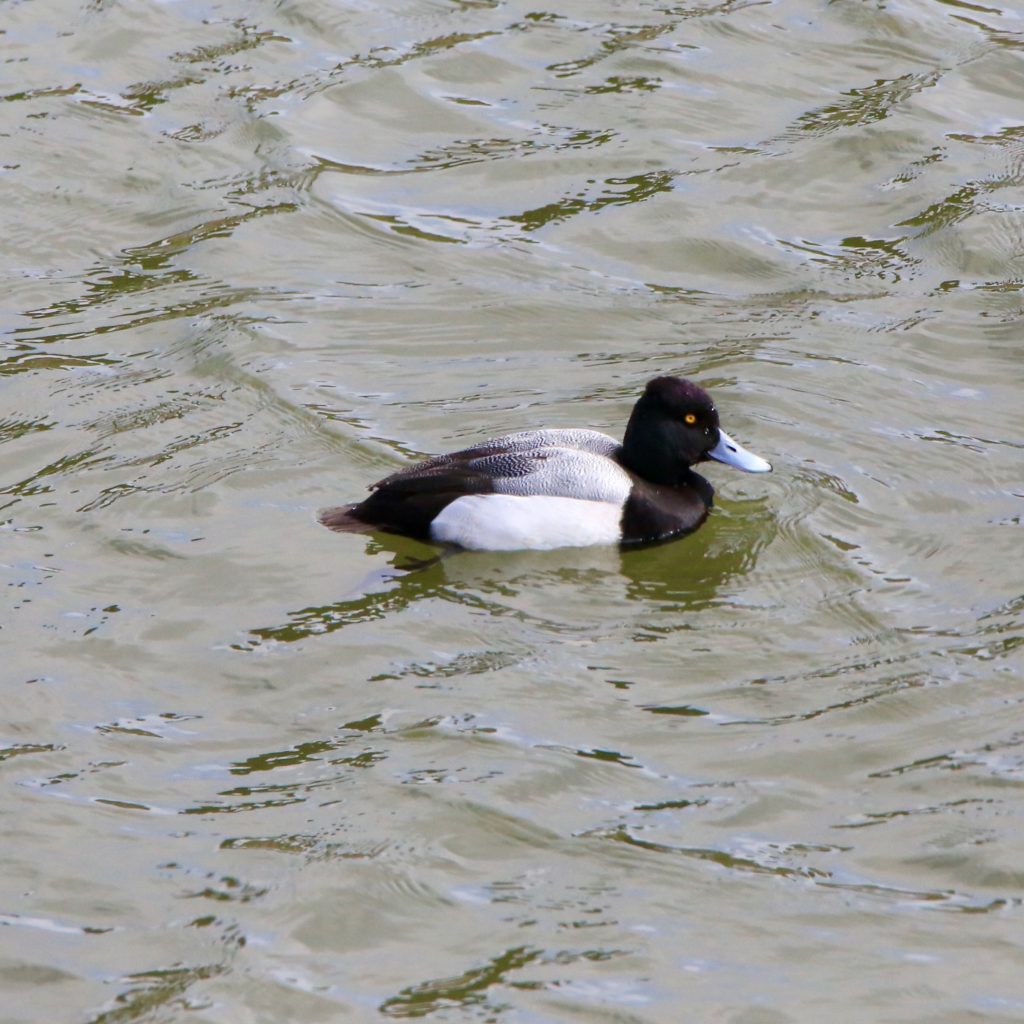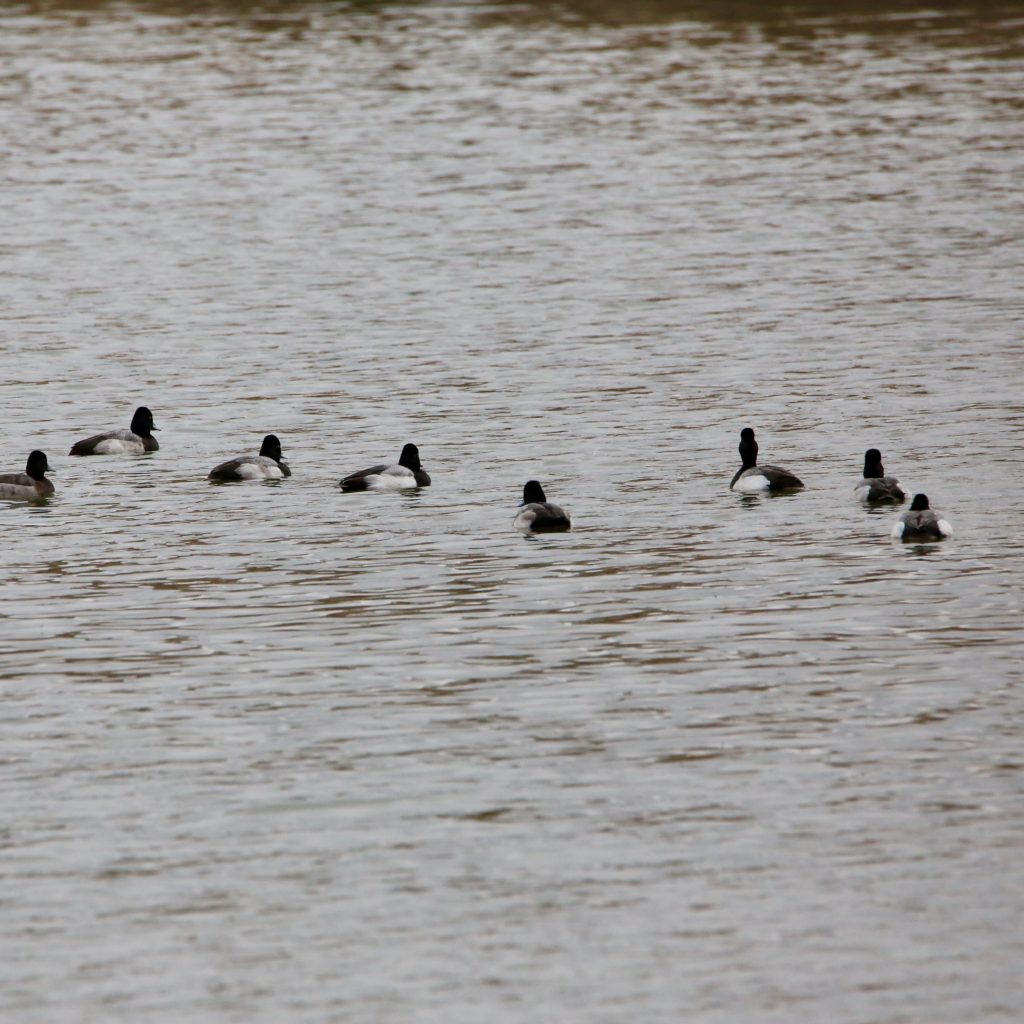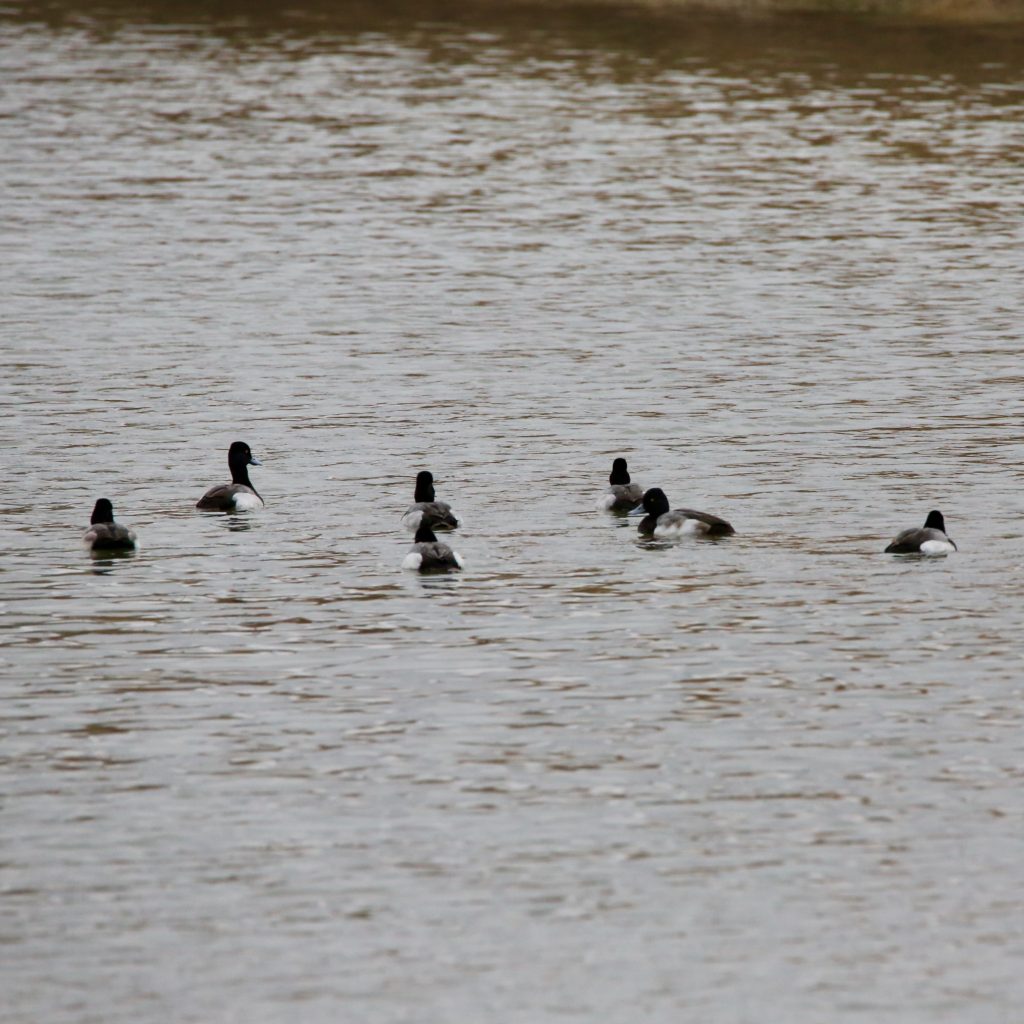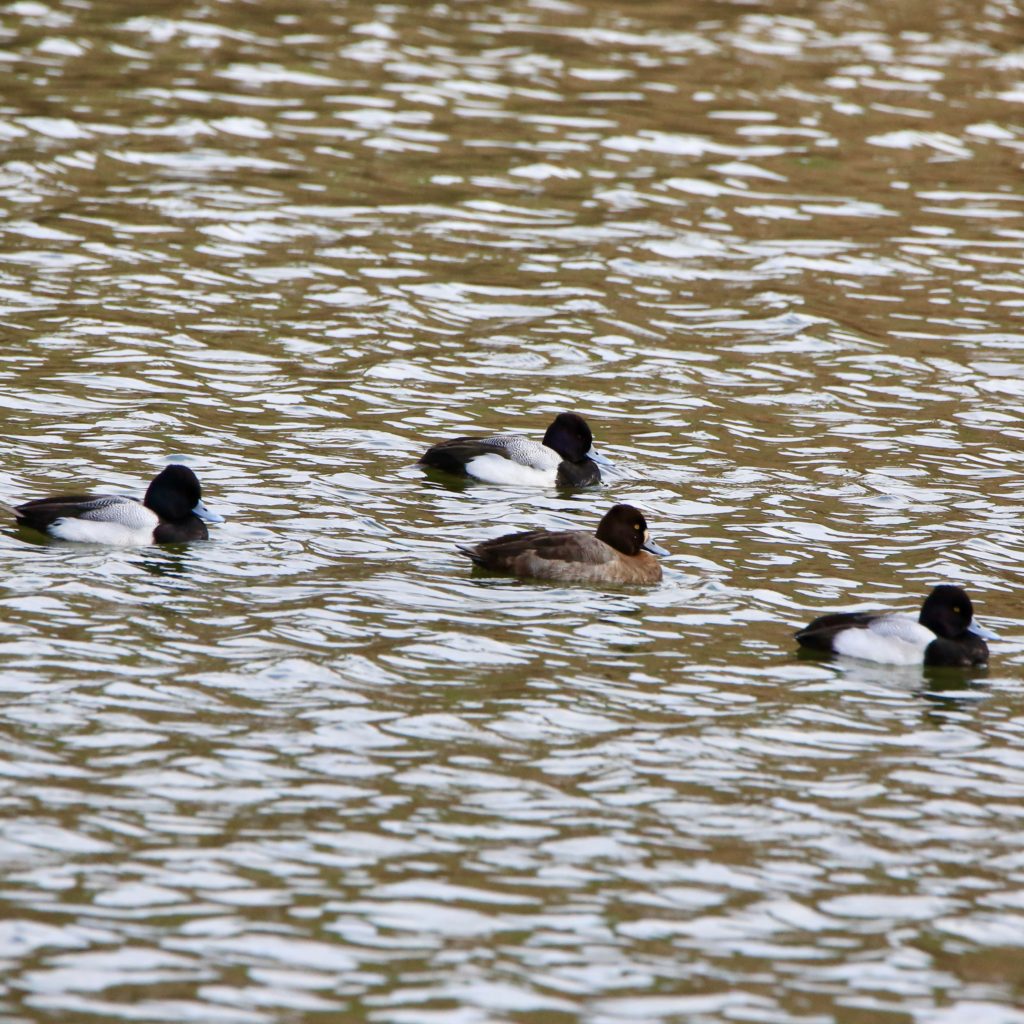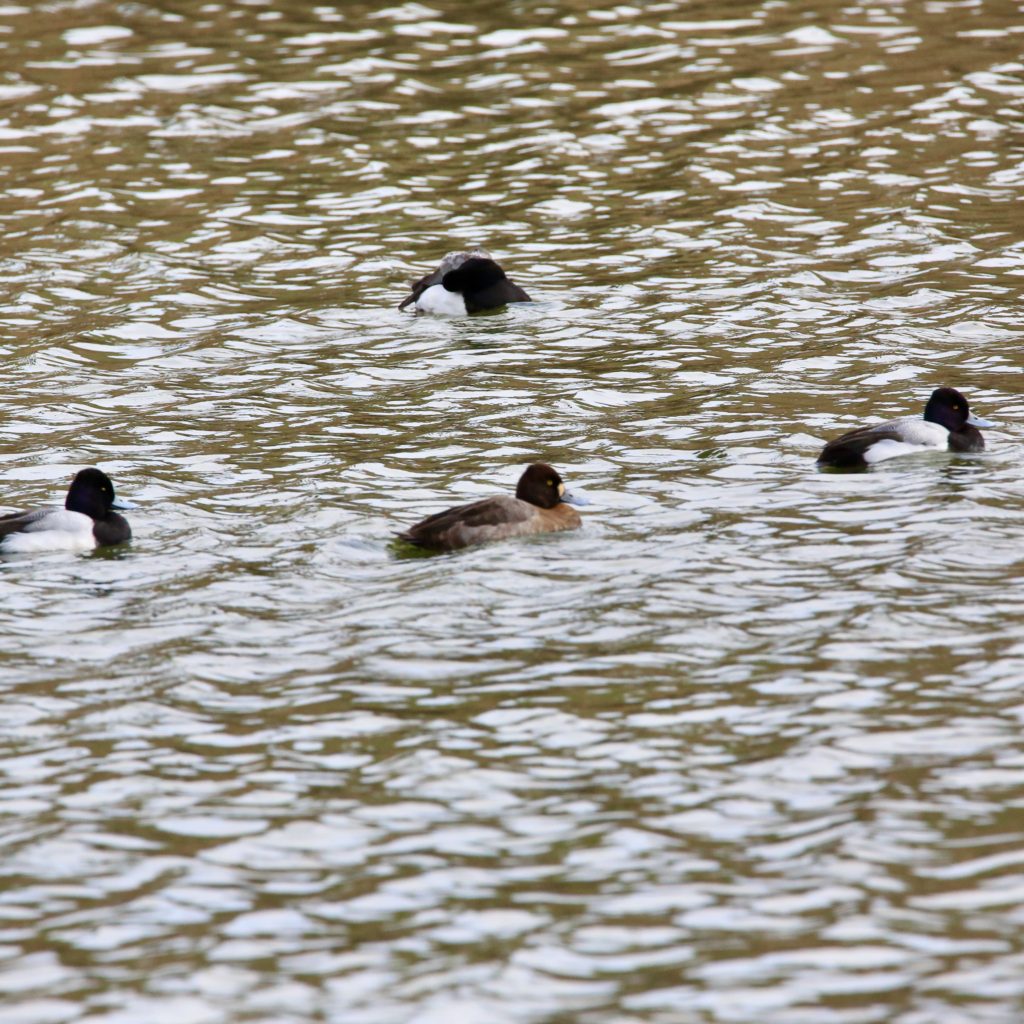
Lesser Scaup
A Lesser Scaup is a fun bird to see while bird watching. Below are some tips to help you identify Lesser Scaups. We have also put together a list of fun Lesser Scaup t-shirts, Lesser Scaup bird patches, birdhouses, bird feeders, binoculars, stickers, and other fun bird-watching items.
About Lesser Scaups
The Lesser Scaup (Aytha Affinis) is one of the most widespread diving ducks found in the inland water of North America.
Description and Identification
Lesser Scaups are medium-sized ducks around 15.3 – 18.1 inches in length with a wingspan
of 26.8 – 30.7 inches. They have small peaks at the back of their heads from where the neck
is flat, unlike the rounded necks that Greater Scaups have. Breeding males seem black and
white from a distance but have an iridescent purple and green sheen on their heads along
with a finely barred black-and-white back. Their bills are slightly blue and are highlighted by
their yellow eyes. Females have brown bodies with dark brown heads, with some females
having a white patch next to their bills. Nonbreeding males have mottled brown-and-gray
bodies and blackish heads, making them seem like a cross between breeding males and
females.
Lesser Scaup Color Pattern
When observed from a distance, the breeding male Lesser Scaup appears to be black and white. Upon a closer look, its iridescent purple-greenish sheen on its head becomes visible, its blank and white barred back stands out, and its bill looks bluish than white.
Female Lesser Scaups are adorned with brown plumage, a darker brown head, and a white patch surrounding its bill. However, it is key to note that not all female lesser Scaups have a white patch.
Lesser Scaup Size
Lesser Scaups are small medium sized diving birds whose relative size for both sexes is:
- Length: 15.3-18.1 in (39-46 cm)
- Weight: 16.0-38.4 oz (454-1089 g)
- Wingspan: 26.8-30.7 in (68-78 cm)
Lesser Scaup Behavior
- When captured by predators, the Lesser Scaup sometimes plays dead in order to escape becoming prey. It will stay still, stretch its head out, draw its wings into its body and leave its eyes open.
- In the winter and during migration, Lesser Scaups create large flocks on bays, lakes, and large wetlands.
Lesser Scaup Food
Their diets vary based on season and habitat but are primarily composed of aquatic
invertebrates like mollusks, insects, crustaceans, and plant material. Their plant diet includes
seeds of pondweeds, widgeon grass, sedges, grasses, zebra mussel, wild celery, and wild
rice. Aquatic invertebrates tend to be a more important part of their diets during the winters,
where they often consume mussels, clams, small fish, various insects, and their larvae. They usually forage through soft mud by sticking their bills into it but may dive into water less than
16 feet deep if required.
These diving birds’ diet consists of clams, crustaceans, mollusks like snails, and some aquatic plants. Although their diet varies with their habitat and the season, the animal matter is predominantly made up of their diet.
Lesser Scaup Habitat
Lesser Scaups mainly breed in the marshy ponds found in the prairie pothole regions of
the northern United States and Canada throughout the boreal forest and the tundra zone. They
are drawn towards areas with emergent vegetation as well as hayfields during breeding
before they migrate towards water bodies like ponds, lakes, reservoirs, coastal estuaries, and
coastal bays during the winters. Unlike their cousins – Greater Scaups – they tend to
primarily use freshwater and brackish wetlands over marine regions, despite having highly
overlapping wintering locations.
If you are looking for Lesser Scaups during the winter, you are likely to find them inhabiting reservoirs, coastal bays, and lakes. During their breeding season, they move to marshes of Northern America to nest.
Range and Migration
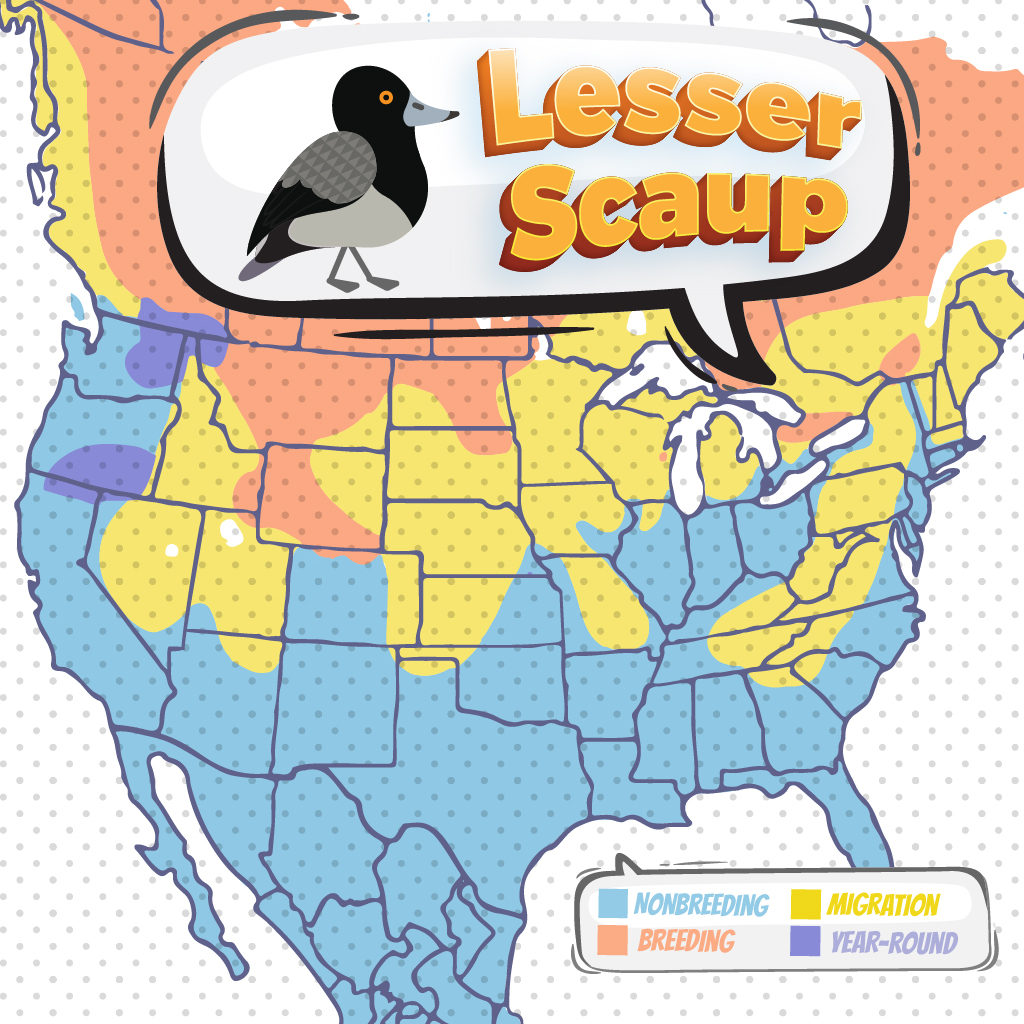
Lesser Scaups are small diving ducks that are heavily migratory. They range from Alaska
and most of Canada to the northern United States during the breeding seasons. These
medium-distance migrants have a remarkable range and can be found wintering from the
Atlantic and Pacific coasts and the southern regions of the United States, through all of
Mexico, till Panama in Central America and northern South America. In the extreme south-
east and south-west of their breeding range – around the Rocky Mountains and the southern
Great Lakes – their populations are present all year and do not migrate. Although, there has
been ambiguity about whether the populations actually do not migrate or if they are replaced
by migrants further up north. In recent years, vagrants that have been arriving in western
Europe during the winter seasons has also been increasing.
Lesser Scaup Life Cycle
The female Lesser Scaup lays 9-11 olive buff eggs that she then incubates for 23-28 days. Shortly after hatching, she leads her precocial chicks to the water where they feed themselves. Although they can dive for their own food, they can’t stay underwater for too long due to their buoyancy. These ducklings take flight at the age of 40-45 days old.
Lesser Scaup Nesting
Lesser Scaups nest on the ground in sites surrounded by tall vegetation in prairies,
hayfields, fresh and brackish marshes, and lakes with sedges and cattails. These sites are
selected by females. Sites may be selected on floating mats of vegetation as well, as the
primary criteria are sufficient protection from potential predators and the wind. Females
construct the nest by making a small depression on the ground before adding other grasses,
other plant material, and their own down feathers. These birds also start laying eggs before
the nest is complete, as they continue to add material while they lay eggs. This is a useful
habit as a single brood can have a clutch size of 6 – 14 eggs.
Ornithology
Bird Watching Academy & Camp Subscription Boxes
At Bird Watching Academy & Camp we help kids, youth, and adults get excited and involved in bird watching. We have several monthly subscription boxes that you can subscribe to. Our monthly subscription boxes help kids, youth, and adults learn about birds, bird watching, and bird conservation.
Bird Watching Binoculars for Identifying Lesser Scaups
The most common types of bird-watching binoculars for viewing Lesser Scaups are 8×21 binoculars and 10×42 binoculars. Bird Watching Academy & Camp sells really nice 8×21 binoculars and 10×42 binoculars. You can view and purchase them here.
Lesser Scaup T-shirts
If you love the Lesser Scaup you should purchase a Bird Watching Academy & Camp T-shirt. To help support bird conservation we donate 10 percent to bird conservation activities.
Lesser Scaup Iron On Patches
Kids, Youth, and Adults love to collect our Bird Watching Academy & Camp iron-on patches. Our bird-watching patches help you keep track of the birds you have seen and identified. You can also display the patches on our Bird Watching Academy & Camp banners.
The Lesser Scaup is a great iron-on patch to start your collection with. The patches are durable and can be sewn on or ironed on to just about anything.
Lesser Scaup Stickers
Stickers are a great way for you to display your love for bird watching and the Lesser Scaup. We sell a monthly subscription sticker pack. The sticker packs have 12 bird stickers. These sticker packs will help your kids learn new birds every month.
Bird Feeders for Lesser Scaups
There are many types of bird feeders. Here are our favorite bird feeders for your backyard. We use all of these bird feeders currently. Kids will have a great time watching birds eat at these bird feeders. Using this collection of bird feeders will provide a wide variety and many types of birds.
Best Bird Houses for Lesser Scaups
There are many types of birdhouses. Building a birdhouse is always fun but can be frustrating. These 4 birdhouses have become our favorites. Getting a birdhouse for kids to watch birds grow is always fun. We spent a little extra money on these birdhouses but they have been worth the higher price and look great.


